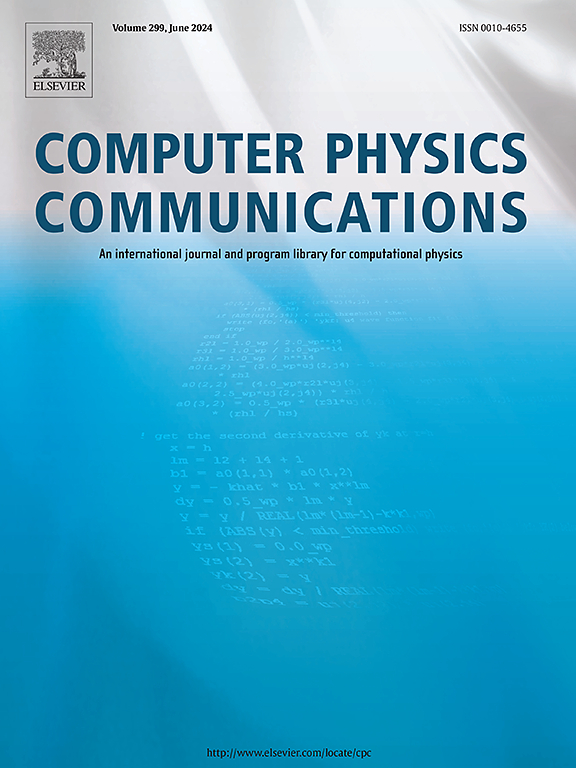二维野火模拟的简化大气-火灾耦合模型
IF 3.4
2区 物理与天体物理
Q1 COMPUTER SCIENCE, INTERDISCIPLINARY APPLICATIONS
引用次数: 0
摘要
每年,野火都会在世界范围内造成严重问题,尤其是在夏季。许多计算模型已经被开发出来来模拟和研究火灾动力学的影响。本文提出了一个耦合但简化的大气-火灾模型,以比不耦合的火灾蔓延模型更深入地描述现象,同时避免了大型耦合模型的高计算成本。本文给出了该模型的形式化和近似解的数值方法。尽管进行了简化和假设,但由于采用了诸如二维空间域、湍流建模、浸入边界法处理地形以及压力求解器的有限差分与离散傅里叶变换混合等策略,该模型在捕捉火灾蔓延行为和计算要求方面取得了相当好的结果。提出的模型及其数值实现是向具有三维空间域的扩展版本迈出的第一步。本文章由计算机程序翻译,如有差异,请以英文原文为准。
Simplified coupled atmosphere-fire model for simulation of 2D wildland fires
Every year, wildfires pose a significant problem worldwide, particularly during the summer season. Many computational models have been developed to simulate and study the effects of fire dynamics. This work proposes a coupled but simplified atmosphere-fire model to describe the phenomena in a step further than uncoupled fire spread models while avoiding the high computational cost of large coupled models. This article presents the formalization of the model and the numerical methods employed to approximate its numerical solution. Despite the simplifications and assumptions made, the model achieves competitive results in terms of capturing the fire spreading behavior and computational requirements thanks to strategies such as a two-dimensional spatial domain, turbulence modeling, topography handling by the Immersed Boundary Method, and mixed Finite Difference with Discrete Fourier Transform for the pressure solver. The proposed model and its numerical implementation are the first step towards an extended version with a three-dimensional spatial domain.
求助全文
通过发布文献求助,成功后即可免费获取论文全文。
去求助
来源期刊

Computer Physics Communications
物理-计算机:跨学科应用
CiteScore
12.10
自引率
3.20%
发文量
287
审稿时长
5.3 months
期刊介绍:
The focus of CPC is on contemporary computational methods and techniques and their implementation, the effectiveness of which will normally be evidenced by the author(s) within the context of a substantive problem in physics. Within this setting CPC publishes two types of paper.
Computer Programs in Physics (CPiP)
These papers describe significant computer programs to be archived in the CPC Program Library which is held in the Mendeley Data repository. The submitted software must be covered by an approved open source licence. Papers and associated computer programs that address a problem of contemporary interest in physics that cannot be solved by current software are particularly encouraged.
Computational Physics Papers (CP)
These are research papers in, but are not limited to, the following themes across computational physics and related disciplines.
mathematical and numerical methods and algorithms;
computational models including those associated with the design, control and analysis of experiments; and
algebraic computation.
Each will normally include software implementation and performance details. The software implementation should, ideally, be available via GitHub, Zenodo or an institutional repository.In addition, research papers on the impact of advanced computer architecture and special purpose computers on computing in the physical sciences and software topics related to, and of importance in, the physical sciences may be considered.
 求助内容:
求助内容: 应助结果提醒方式:
应助结果提醒方式:


